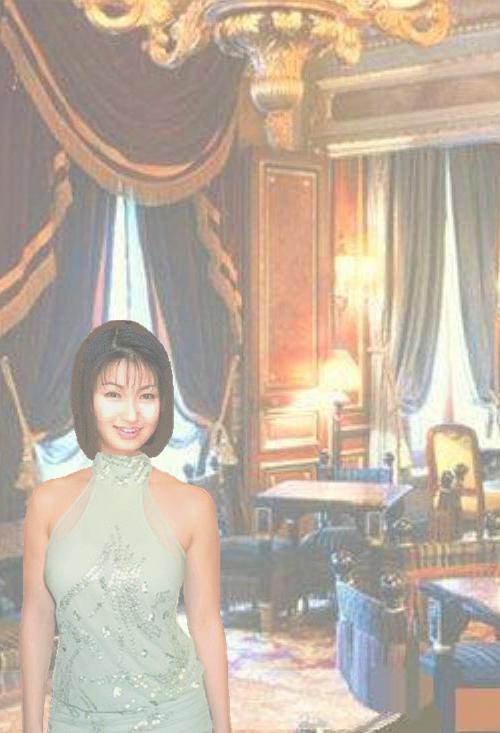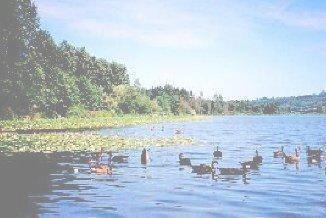Botchan & Glenn Gould
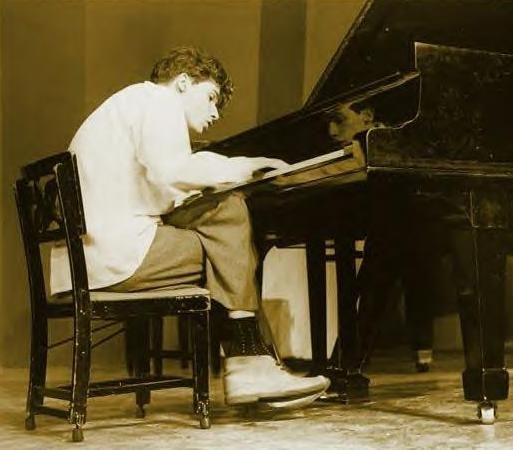
(gould.jpg)
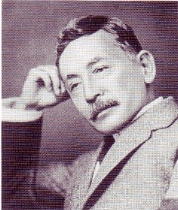
(natsume.jpg)
Natsume Sōseki (夏目 漱石)
(February 9, 1867 – December 9, 1916)
He is widely considered to be the foremost Japanese novelist of the Meiji period (1868–1912).
He is best known for his novels such as "Kokoro," "Botchan," "I Am a Cat" and his unfinished work "Light and Darkness."
He was also a scholar of British literature and composer of haiku, kanshi, and fairy tales.
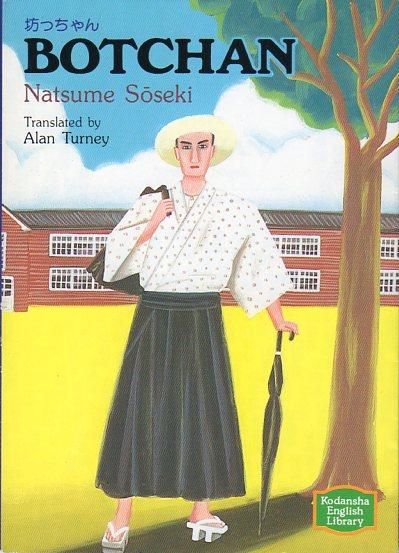
(kiyo003.jpg)
From 1984 until 2004, his portrait appeared on the front of the Japanese 1000-yen note.
In Japan, he is often considered the greatest writer in modern Japanese history.
He has had a profound effect on almost all important Japanese writers since.
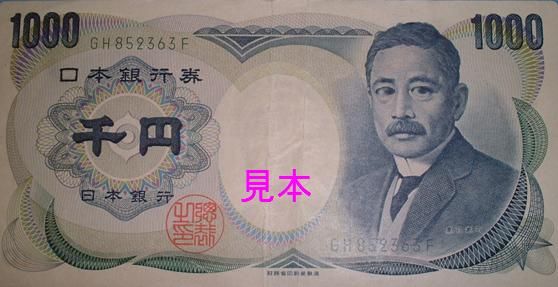
(1000yen.jpg)
In 1900, the Japanese government sent Sōseki to study in Great Britain as "Japan's first Japanese English literary scholar".
He visited Cambridge and stayed a night there, but gave up the idea of studying at the university because he could not afford it on his government scholarship.
He studied instead at University College, London (UCL).
He had a miserable time of it in London, spending most of his days indoors buried in books, and his friends feared that he might be losing his mind.
He also visited Pitlochry in Scotland.
He lived in four different lodgings, only the last of which, lodging with Priscilla and her sister Elizabeth Leale in Clapham, proved satisfactory.
Five years later, in his preface to "Bungakuron (The Criticism of Literature)," he wrote about the period:
The two years I spent in London were the most unpleasant years in my life.
Among English gentlemen I lived in misery, like a poor dog that had strayed among a pack of wolves.
He got along well with the one Leale sister, who shared his love of literature (notably Shakespeare) and spoke fluent French, much to his admiration.
The Leales were a Channel Island family, and Priscilla had been born in France.
The sisters worried about Natsume's incipient paranoia and successfully urged him to get out more and take up cycling.
Despite his poverty, loneliness, and mental problems, he solidified his knowledge of English literature during this period and returned to Japan in 1903.
After his return to the Empire of Japan, he replaced Koizumi Yakumo (Lafcadio Hearn) at the First Higher School, and subsequently became a professor of English literature at Tokyo Imperial University, where he taught literary theory and literary criticism.
SOURCE: "Natsume Sōseki"
From the Wikipedia, the free encyclopedia

Kato, I've never heard of Natsume Sōseki, nor his works.

(kato3.gif)
I know... Most Canadians don't know his name.
Is he well-known in Japan?
Yes, he is. If a person doesn't know his name in Japan, he or she is not a Japanese.
Are you sure about that?
I'm absolutely sure of that. You can bet on that. From 1984 until 2004, his portrait appeared on the front of the Japanese 1000-yen note. So almost all the Japanese know his name and his face.
Can you find his books in the library?
Yes, of course, you can. Why don't you borrow one of the following books at Vancouver Public Library?

(lib21129.gif)
■"Actual Catalogue Page"

So there are 31 books written by Natsume Sōseki, aren't there?

Yes, you can read the translated version such as Kokoro, Sanshirō, and Kusamakura.
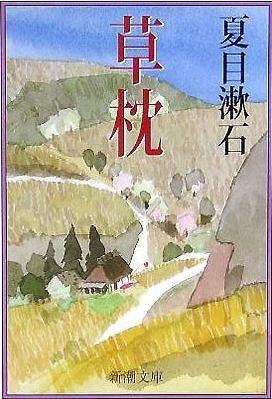
(kusamaku3.jpg)

Which one do you recommend, kiddo?

I recommend "Kusamakura (草枕)."
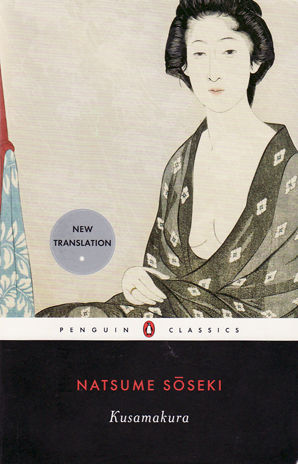
(kusamaku2.jpg)

Why is that?

...'Cause this book was Glenn Gould's most favorite book. When he died on October 4, 1982 at the age of 50, there were two books at his bedside: the Bible and "Kusamakura."
Did he read the book in Japanese.
No, he didn't. He read the translated version.
What does the title mean?
Literally, "Kusamakura (草枕)" means "grass pillow", which implies "camping in the wild."
How did he find the book?
Well ..., at the age of 35, Glenn Gould traveled to the eastern part of Nova Scotia, and met Professor William Foley in the train. In the course of conversation, the professor told him about the book 'cause he was greatly moved while reading it.
So, Glenn Gould bought the book, didn't he?
Yes, he did, and loved it so much so that he actually read the whole book on the phone to his sister.
No kidding!
This is a true story---one of his eccentricities.
Glenn Gould
(25 September 1932 – 4 October 1982)

He was a Canadian pianist who became one of the best-known and most celebrated classical pianists of the 20th century.
He was particularly renowned as an interpreter of the keyboard music of Johann Sebastian Bach.
His playing was distinguished by remarkable technical proficiency and capacity to articulate the polyphonic texture of Bach's music.
Gould rejected most of the standard Romantic piano literature and, after his adolescence, avoided Liszt, Schumann, and Chopin.
Although his recordings were dominated by Bach, Gould's repertoire was diverse, including works by Beethoven, Mozart, Haydn, Brahms, pre-Baroque composers such as Jan Pieterszoon Sweelinck, and such 20th-century composers as Paul Hindemith, Arnold Schoenberg and Richard Strauss.
Gould was well known for various eccentricities, from his unorthodox musical interpretations and mannerisms at the keyboard to aspects of his lifestyle and personal behavior.
Rare strange footage
He stopped giving concerts at the age of 31 to concentrate on studio recording and other projects.
Gould was also known as a writer, composer, conductor, and broadcaster.
He was a prolific contributor to musical journals, in which he discussed music theory and outlined his musical philosophy.
His career as a composer was less distinguished.
His output was minimal and many projects were left unfinished.
There is evidence that, had he lived beyond 50, he intended to abandon the piano and devote the remainder of his career to conducting and other projects.
As a broadcaster, Gould was prolific.
His output ranged from television and radio broadcasts of studio performances to musique concrète radio documentaries about life in the Canadian wilderness.
The Life and Times of Glenn Gould
Source: "Glenn Gould"
Free encyclopedia "Wikipedia (Wikipedia)"

You see, Diane ... if Glenn Gold lived beyond 50, he intended to abandon the piano and devote the remainder of his career to conducting and other projects.

...like what?
He might have produced documentaries about life in the Canadian wilderness 'cause he loved "Kusamakura" from the bottom of his heart.
What makes you think so, Kato?
Actually, Glenn Gould made numerous television and radio programs for CBC Television and CBC Radio such as his music-concrète "Solitude Trilogy," which consists of "The Idea of North"---a meditation on Northern Canada and its people, "The Latecomers" about Newfoundland, and "The Quiet in the Land" about Mennonites in Manitoba. All three use a radiophonic electronic-music technique that Gould called contrapuntal radio, in which several people are heard speaking at once--—much like the voices in a fugue—--manipulated through the use of tape.
So, Kato, you're saying, Glenn Gould was really influenced by the book written by Natsume Sōseki.
Yes, I am.
But how come you're telling me his story?
...cause you love music as well as wilderness in the North. You enjoyed life in Faro---a town in Canadian North, didn't you?
Oh yes, I did.

(tramp02.jpg)

(dianesun.jpg)
Subj:Summer is here
with us!
Enjoy the sunshine!
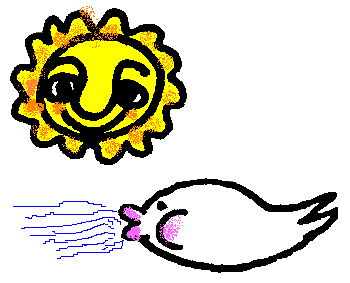
(sunwind2.gif)
From: diane03760@vancouver.ca
To: barclay1720@aol.com
Date: Tue, Jul 26, 2011 4:35 pm.
Pacific Daylight Saving Time
Thanks my truly skinny Socrates, Kato.

(mother2.jpg)
■"Madame Riviera and Burger"
(July 26, 2011)
I've read the above article.
Your article is excellent as usual.
I did remember that you lived in Yellowknife some years ago.

(canada2.gif)

(yellowk2.jpg)
Many years ago, I too lived for six months or so in the north, Whitehorse, Yukon Territory.

(faromap2.gif)
Actually, I worked for a mining company in a small town called Faro (Anvil Mines at the time) as secretary to the President.
I was given my own apartment (most of the staff had to live in bunk houses) and a huge salary compared with what I would receive in Vancouver.
So I was thrilled about that.
I didn't want to feel totally isolated, though, so I asked whether I could eat with the others in the cookhouse and they obliged.
Thank God.
It was fun and much easier than doing my own cooking and making do with the limited selection in the local store.
The cook took a special liking to me and every day he would give me extra rations of cookies and cakes.
Pretty soon I realized that if I took advantage of these favors I would end up being a roly-poly.
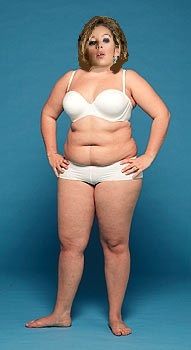
(roly05.jpg)
so I would take them and then give them away.
Lotsa fun.
I do remember a really cute Japanese gal who worked up there telling me she had already gained 25 lbs in one year, and it showed.

(roly06.jpg)
It was all the lesson I needed, thankfully.

(creuset.jpg)
Le Crueset cookware is definitely famous.
A friend of mine in Kerrisdale has some and he said they're very, very expensive but worth every penny.

(kerris2.jpg)
He has one pot that he uses almost daily and has for years and it has proved to be the best pot he's every cooked with and worked with---sturdy, reliable, easy to work with.
So I guess it's worth the big bucks, true?!

(creuset2.jpg)>
Vancouver is pretty good, but not paradise I'd say.
The weather's too crummy half the time, or more than half the time actually, Which is why my brother left Canada for France.
He could no longer stand the cold weather.
Certainly, I do miss him.
As a matter of fact, I've found an interesting joke:
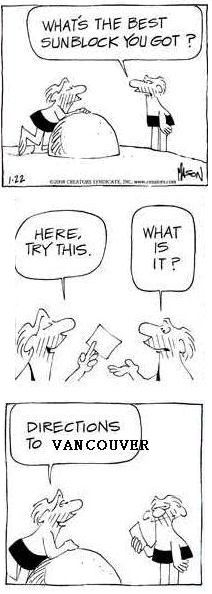
(vanc102b.jpg)
You see, Kato, we don't have many sunny days in Vancouver!
Anyway, I enjoyed reading your article.
Thanks again for all this.
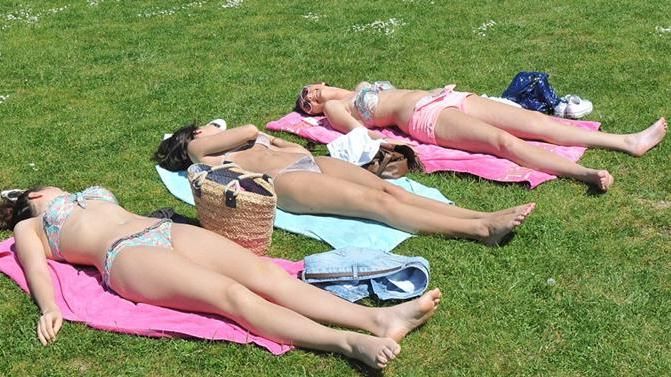
(engbay03.jpg)
Love, Diane ~
SOURCE: "Roly-poly in the North"
(July 30, 2011)

So, I thought you might just as well want to read "Kusamakura."

(gyaha.gif)
【Himiko's Monologue】
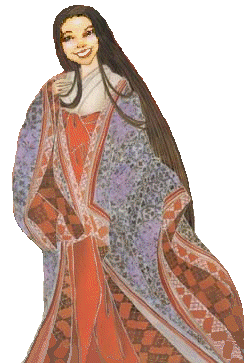
(himiko22.gif)
Wow!
I wish I could be up in the North.
I wanna enjoy the wilderness in the Canadian North like Diane.
There is an old saying:
Where there is a will,
there is a way.
Someday, I'll go to Faro with my sweetheart.
Before that, however, I'd better find a nice gentleman, I suppose.
In any case, I hope Kato will write another interesting article soon.
So please come back to see me.
Have a nice day!
Bye bye ...

(hand.gif)

(renge62e.jpg)
If you've got some time,
Please read one of the following articles:

(chiwawa5.gif)
■"Diane Chatterley"
■"From Canada to Japan"
■"From Gyoda to Vancouver"
■"Film Festival"
■"Madame Taliesin"
■"Happy Days"
■"Vancouver Again"
■"Midnight in Vancouver"
■"Madame Lindbergh"
■"Dead Poets Society"
■"Letters to Diane"
■"Taliesin Studio"

(kimo10.jpg)
■"Wright and Japan"
■"Taliesin Banzai"
■"Memrory Lane to Sendai"
■"Aunt Sleepie"
■"Titanic @ Sendai"
■"Birdcage"

(sylvie121.jpg)
■"Roly-poly in the wild"
■"Silence is dull"
■"Zen and Chi Gong"
■"Piano Lesson"
■"Dangerous Relation"
■"Electra Complex"

(juneswim.jpg)
■"Covent Garden"
■"Fatal Relation"
■"Notre Dame"
■"Anne Frank"
■"Biker Babe"
■"Diane Girdles the Globe"
■"Diane in Casablanca"
■"Infidelity Neighbourhood"
■"Forest Bathing"
■"Enjoy Ramen!"
■"Sex, Violence, Love"

(vanc700.jpg)
■"Halifax to Vancouver"
■"A Thread of Destiny"
■"Fujiyama Geisha"
■"Beaver Lake"
■"God is Near!"
■"Holy Cow@Rose Garden"
■"Vancouver Earthquake"
■"Birthplace"

(sylvia16.jpg)
■"KIFF"
■"You Love Japan, eh?"
■"Eight Bridges"
■"First Love"
■"Fright on Flight"
■"Boy's Movie"
■"From Summer to Eternity"

(surfin2.gif)

(bare02b.gif)
Hi, I'm June Adams.
Glenn Gould was widely known for his unusual habits.
He usually hummed while he played the piano, and his recording engineers had mixed results in how successfully they were able to exclude his voice from recordings.
Gould claimed that his singing was subconscious and increased proportionately with the inability of the piano in question to realize the music as he intended.
It is likely that this habit originated in Gould's having been taught by his mother to "sing everything that he played."
This became his unbreakable and notorious habit.
Some of Gould's recordings were severely criticized because of the background "vocalise".
Many listeners would find the groans and croons intolerable.
Glenn Gould: A Portrait (1985)
Gould was renowned for his peculiar body movements while playing and for his insistence on absolute control over every aspect of his playing environment.
The temperature of the recording studio had to be exactly regulated.
He invariably insisted that it be extremely warm.
The air conditioning engineer had to work just as hard as the recording engineers.
The piano had to be set at a certain height and would be raised on wooden blocks if necessary.
A small rug would sometimes be required for his feet underneath the piano.
He had to sit fourteen inches above the floor and would play concerts only while sitting on the old chair his father had made.
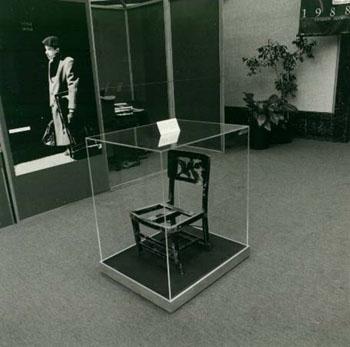
(chair20.jpg)
He continued to use this chair even when the seat was completely worn through.
His chair is so closely identified with him that it is shown in a place of honor in a glass case at the National Library of Canada.

(karuhap8.jpg+bare04e.gif)
ところで、愛とロマンに満ちた
レンゲさんのお話をまとめて
『レンゲ物語』を作りました。
もし、レンゲさんの記事をまとめて読みたいならば、
次のリンクをクリックしてくださいね。
■『愛とロマンのレンゲ物語』

(renge730.jpg)
■『軽井沢タリアセン夫人 - 小百合物語』
とにかく、今日も一日楽しく愉快に
ネットサーフィンしましょうね。
じゃあね。

(dogs17.gif)

(girlxx.gif)













